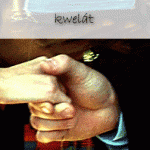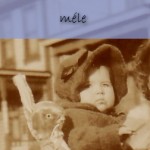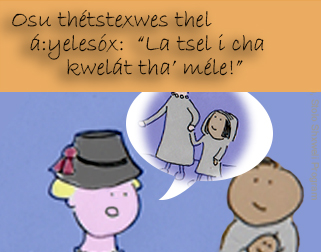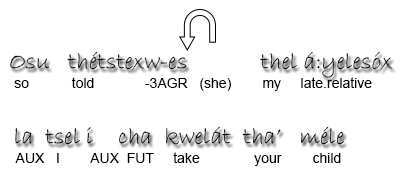Osu thétstexwes thel á:yelesóx: “La tsel i cha kwelát tha’ méle!” means ‘So she said to my (late) mother: I am going to take your daughter’.
Audio: Elizabeth Herrling
This phrase has the following structure:
- osu – This word is a general sentence connector. Often untranslatable, here it means roughly so
- thétstexw – to tell, to say to

- -es – here, the –es ending marks the presence of a third person subject, that is someone other than you or me. The third person subject in this case is the understood ‘she‘
- thel – my (this form is usually used before a term for a female)
- á:yelesóx – late relative, here Elizabeth uses this to refer to her mother, literally it means ‘one who left us’, see thel á:yelesóx

- la – this is an auxiliary (‘helper’) verb, related to the meaning go
- tsel – I
- i – this may be another auxiliary (‘helper’) verb, or it may be a variant of the word ye, which Elders often use when talking about actions related to travelling and motion
- cha – this marks the future tense
- kwelát – to take, grasp, take hold of

- tha’ – your (this is the form more usually used before females, before a male or neuter Elders often say ta’)
- méle – child (used for talking about people’s kin, not just any young person)




No comments yet.